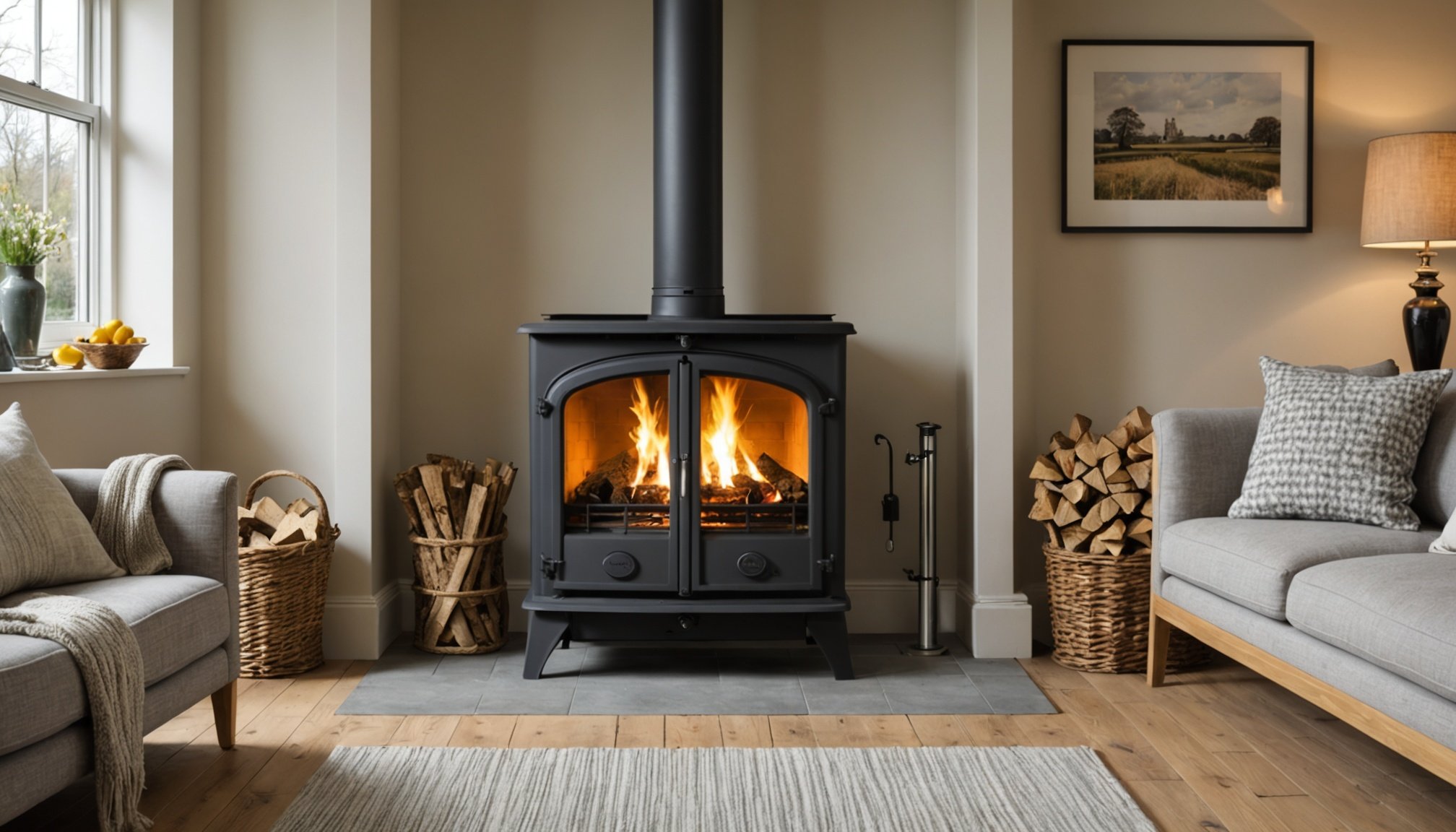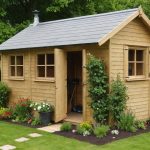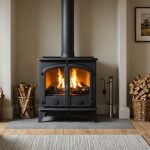Understanding Local Climate and Its Impact on Heating
Understanding the local climate is essential to determining your heating needs. Norfolk’s weather is characterized by its mild, maritime climate with relatively moderate seasonal temperature variations. Winters can be cool, with temperatures frequently dipping, which emphasizes the need for suitable heating solutions.
Norfolk’s climate can surprisingly become chilly, despite its temperate reputation. During these colder months, choosing the right heating system becomes crucial. A wood burner tailored to the local weather can provide effective warmth, ensuring both energy efficiency and comfort.
A voir aussi : Top 10 Effective Ways to Minimize Noise Pollution in Your Central London Apartment
Influence on Heating Needs
In Norfolk, heating needs fluctuate with the seasons, reflecting the variations of the local climate. Selecting a wood burner with adjustable heat output can cater to these changing requirements, allowing you to efficiently manage energy consumption relative to fluctuating Norfolk weather.
Recommendations for Heat Output
When considering heat output, aim for options that offer flexibility. A wood burner’s capacity should match common temperatures during winter while offering an ability to adjust during milder periods. Factors like home size and insulation are also pivotal. Evaluating these alongside local climate conditions assists in making a well-informed decision that maximises both comfort and energy efficacy.
Cela peut vous intéresser : Essential Tips for Constructing a Fire-Resistant Garden Shed in the Scenic Countryside of Wales
Space Considerations for Your Wood Burner Stove
Selecting the right wood burner stove for your cottage requires careful thought about space requirements and cottage layout. The right stove not only heats effectively but also complements the room’s aesthetic without feeling intrusive. Too large a stove in a small area may overwhelm the space, while a stove that is too small might not deliver sufficient warmth. It’s crucial to assess the size of your cottage and its specific heating requirements, ensuring your living area is comfortable without wasting energy.
Understanding the relationship between room dimensions and wood stove efficiency is key. Generally, a stove’s ability to heat depends on the cubic footage of the room. Larger rooms typically require larger stoves, while smaller spaces benefit from compact models. It’s about striking a balance that keeps the room cosy without overheating.
For those looking to maximise space, interactive design options can help. Consider positioning your stove in a central location to distribute heat evenly or using corner units that fit snugly into unused spaces. These strategic placements optimise your room layout, enhancing both function and style. Keep in mind, aesthetic considerations should not trump practicality; the ultimate goal is efficient heating tailored to your specific layout.
Choosing the Right Style and Aesthetic Compatibility
Selecting the perfect stove design for your home involves more than just considering functionality. It’s about finding a piece that fits seamlessly into your existing interior decor. For those lucky enough to own a traditional Norfolk cottage, certain wood burner styles can significantly enhance your space. Popular choices often include stoves in classic black or authentic cast iron, bringing an old-world charm that resonates with the cottage aesthetics.
The true challenge lies in aligning your chosen stove with the interior decor of your cottage. This sync can make a place feel harmonious and inviting, turning functional elements into focal points. Consider your cottage’s palette and theme when selecting a stove. Does a modern stainless steel model add contrast, or would an antique-styled piece amplify the warm, cottage-like vibe?
To ensure your selection complements your home, think about:
- The material of the stove – cast iron and steel are durable and versatile.
- The size and placement – these affect both aesthetic appeal and practical heating.
- Colour options available which could match or contrast with the cottage’s themes.
Ultimately, the right stove design should gracefully enhance the overall charm of your cottage without stepping too far from its traditional roots.
Evaluating Fuel Types and Their Availability
When considering fuel types for your heating needs, it’s essential to assess the various wood options available, each offering distinct burning efficiencies. Common wood types such as oak, maple, and birch differ significantly in how they burn. For instance, hardwoods like oak and hickory are denser and burn slower, providing sustained heat. On the other hand, softwoods like pine ignite more quickly but release less heat over time.
Local availability plays a crucial role in determining the most suitable wood options. Regions with abundant forests may favour locally sourced hardwoods, while areas where softwoods are plentiful might see different preferences, depending on what’s readily accessible. Understanding the specific types prevalent in your area will aid your decision-making process.
Sustainable fuel sourcing is imperative. Opt for woods from responsibly managed forests that encourage environmental balance. Additionally, proper storage is key to maintaining the quality of your wood fuel. Store wood in a dry, ventilated area to prevent moisture retention, which increases smoke output and reduces heating efficiency.
To conclude, by considering these factors wisely, you ensure a more efficient, environmentally conscious, and effective use of wood fuel within your home.
Installation Requirements and Local Regulations
Understanding the installation guidelines for wood burner stoves in Norfolk cottages is crucial. These guidelines ensure both efficiency and safety. When installing, it’s essential to consider factors such as chimney placement and hearth dimensions. Proper ventilation must be assessed to prevent carbon monoxide build-up.
Compliance with local codes is mandatory. Norfolk, like many regions, has specific requirements for wood burner installations. Adhering to these local building codes ensures your installation meets regional safety standards, which can prevent hazards and penalties. For instance, there may be restrictions on chimney height or requirements for installing carbon monoxide detectors.
Equally significant is the adherence to safety standards. This involves ensuring the stove is placed at a safe distance from combustible materials and that it has adequate clearance. Hiring certified professionals for the installation process is strongly advised. They are well-acquainted with both local codes and safety regulations, ensuring a safe setup. Certified experts also provide a thorough inspection, ensuring that every installation adheres to the highest safety standards.
In summary, a careful and informed approach to installation guidelines, compliance with local codes, and maintaining safety standards can not only enhance the stove’s efficiency but secure a warm and safe environment.
Assessing Energy Efficiency and Operational Costs
Understanding energy efficiency in wood burner stoves can significantly impact your savings. High-efficiency models consume less fuel, reducing overall operational expenses. The significance lies in energy efficiency ratings, which guide you in selecting the best model. Look for certifications like the EPA, indicating adherence to stringent efficiency standards. These ratings are crucial for ensuring that your stove not only performs well but does so at a lower cost over time.
When conducting a cost analysis of wood burner stoves, consider the breakdown of expenses. Initial purchase and installation are upfront costs. However, fuel costs, maintenance, and repairs add up over time. Models with lower operational expenses might have a higher purchase price but tend to save money in the long run through reduced fuel consumption and maintenance requirements.
Investing in energy-efficient models provides long-term financial benefits. They not only reduce operational expenses but also offer better heat distribution, leading to enhanced comfort. Such stoves can ultimately lower your utility bills by cutting down on the need for supplemental heating. By focusing on energy efficiency and conducting a thorough cost analysis, you make an informed decision that balances initial costs with ongoing savings.
Maintenance and Longevity of Wood Burner Stoves
To maximise the lifespan of a wood burner stove, regular maintenance is essential. Proper care ensures you’ll enjoy efficient heat production and reduced emissions.
Essential Maintenance Practices
Begin with routine cleaning: regularly remove ash deposits, which can obstruct air flow. Check door seals for tightness ensuring they prevent air leaks, which can undermine efficiency. A qualified technician should inspect the chimney annually to clear creosote build-up, a potential fire hazard.
Common Issues and Preventative Care
Watch for signs like cracked glass or worn seals, which can lead to reduced performance. Replacing these elements promptly maintains the stove’s integrity. If smoke spills into the room, it might signal a blockage or negative pressure issue, requiring immediate attention.
Expected Lifespan
The longevity of a wood burner stove varies by type and usage. Cast iron varieties are renowned for their durability, lasting upwards of 20 years with diligent care. Steel models also perform well when maintained but may have a slightly shorter lifespan. The choice of stove type, frequency of use, and commitment to maintenance all influence overall longevity. Following these guidelines will ensure your wood burner remains a reliable heat source for years.
Recommended Suppliers and Installers in Norfolk
Selecting the right suppliers and installers for your wood burner in Norfolk requires careful consideration. With a myriad of options available, narrowing down the reputable choices can be a challenge.
When it comes to suppliers, Norfolk hosts several well-regarded establishments known for their quality products and customer service. Many customers appreciate the diversity of options, ranging from traditional cast iron stoves to more modern, efficient models. Be sure to inquire about warranties and energy efficiency ratings to ensure a sound investment.
In terms of installers, the local expertise is notable. Many installers offer comprehensive services that include a complete assessment of your space to optimize safety and efficiency. It’s crucial to verify their experience with installations similar to yours, as this ensures they can address any specific requirements or complications that might arise.
To make an informed choice, consider customer reviews and personal recommendations. Take note of their experiences with both the product and the installation process. Look for feedback on punctuality, professionalism, and the quality of aftercare service.
Here are a few tips:
- Ensure that installers are certified by relevant industry bodies.
- Visit supplier showrooms where possible.
- Ask suppliers for references from previous clients.











